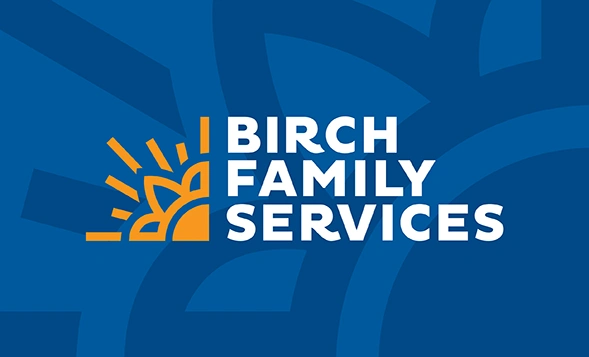A successful capital campaign can be a big undertaking with many phases. From start to finish, the targeted fundraising goal may take years to plan and achieve. The beginning involves much planning and research and may include a feasibility study or hiring a fundraising consultant. Following that, you enter the quiet phase to begin asking for major gifts. At that point, there are several communication marketing components that you need to have as you approach donors.
A successful capital campaign comes in all shapes and sizes, but having these ten items listed below will equip your team with the tools they need to be more effective fundraisers. Some of these are indispensable and some are less essential but, if appropriate for your campaign, can be combined to contribute to the campaign’s overall momentum and success.
1. Capital Campaign Name/Tagline
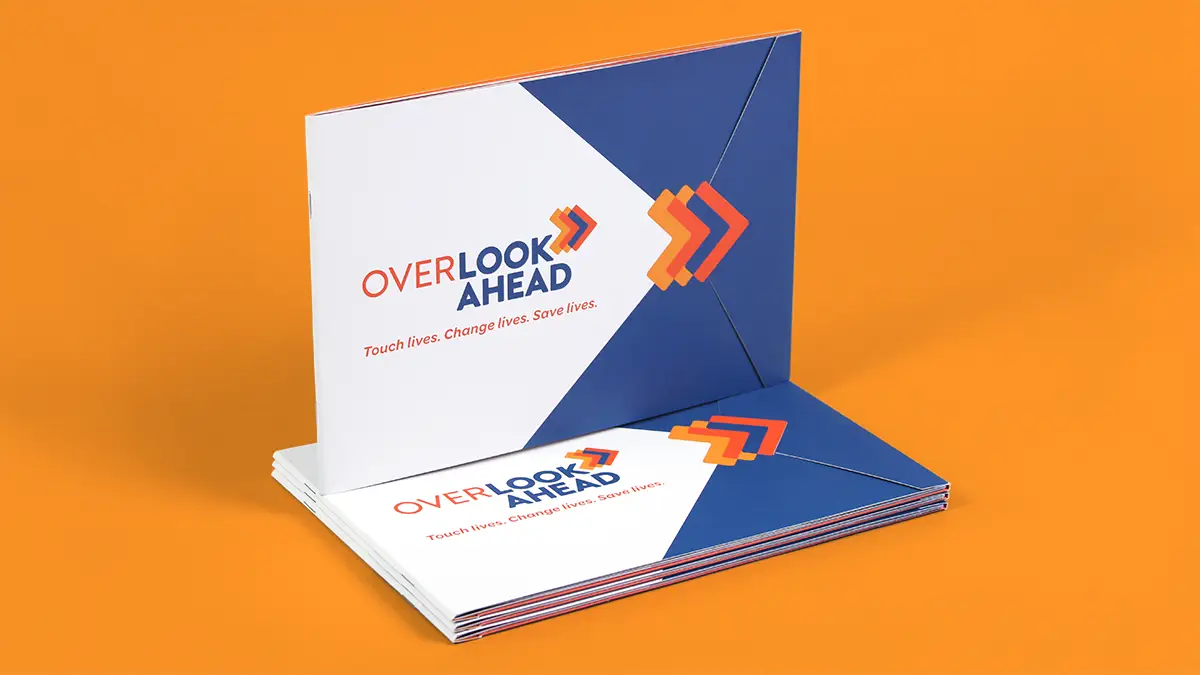
What’s in a name? In this case, everything. You need a name that captures the big intention behind your need for funds. Your project could be very straightforward: renovating an animal shelter or expanding a preschool. Or it could be more complex: expanding the scientific research program at a university, for example, which could involve building classrooms, hiring experts, funding an endowment, funding research at the new facility, and purchasing lab equipment. Your name will bring together the related elements under one big idea and the tagline is the statement that supports it. For example, Overlook Hospital’s capital campaign is named OverLook Ahead and the tagline is “Touch Lives. Change Lives. Save Lives.” These words help convey the scope of the project’s ability to transform all aspects of patient care. Your campaign’s name should offer a strong sense of your objective and, ideally, create an emotional response – empathy, excitement, curiosity – that will attract potential donors.
2. Capital Campaign Case for Support Brochure
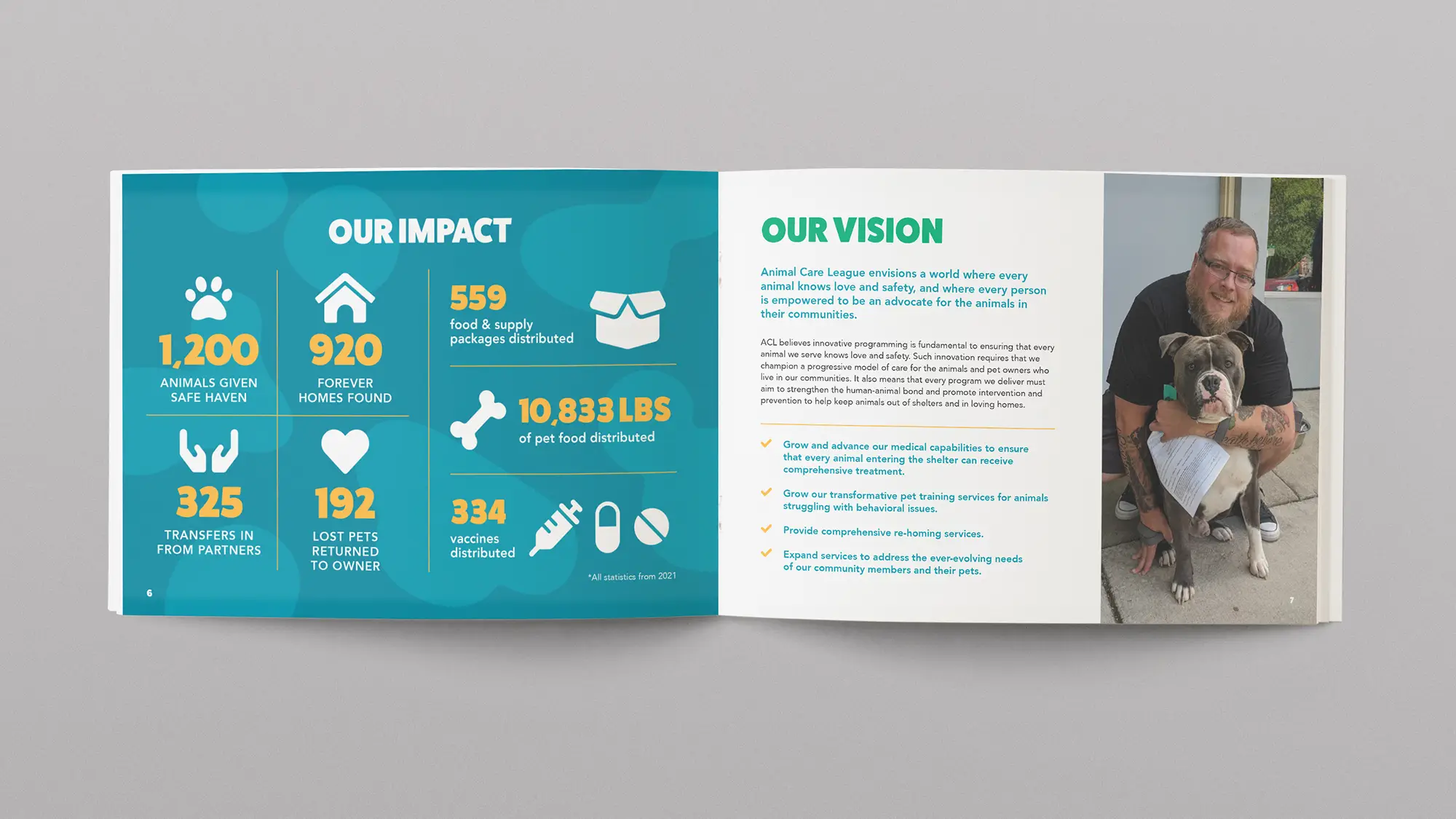
This is a document that tells the prospective donor what you hope to accomplish with their gifts. You can give some background on your organization and its mission, and then clearly and compellingly lay out the problem that you are trying to solve and how the funding will help do that. Writing a succinct case for support is challenging. You could write this yourself in-house, hire a fundraising consultant to do it, or work with a creative agency like Trillion to put the words together. But it is essential that you have a designer create a professional brochure that is impactful. You will approach your biggest donors with this brochure during the quiet phase of your campaign and the more attractive and compelling you can make your case, the better. For Animal Care League’s case for support brochure, we laid out their vision using clear graphics and bold fonts paired with charming animal imagery and infographics. The result was a balance of heart-tugging storytelling and common-sense statistics that clearly demonstrated the impact a donation would have.
3. Successful Capital Campaign Branding — the Look-and-Feel
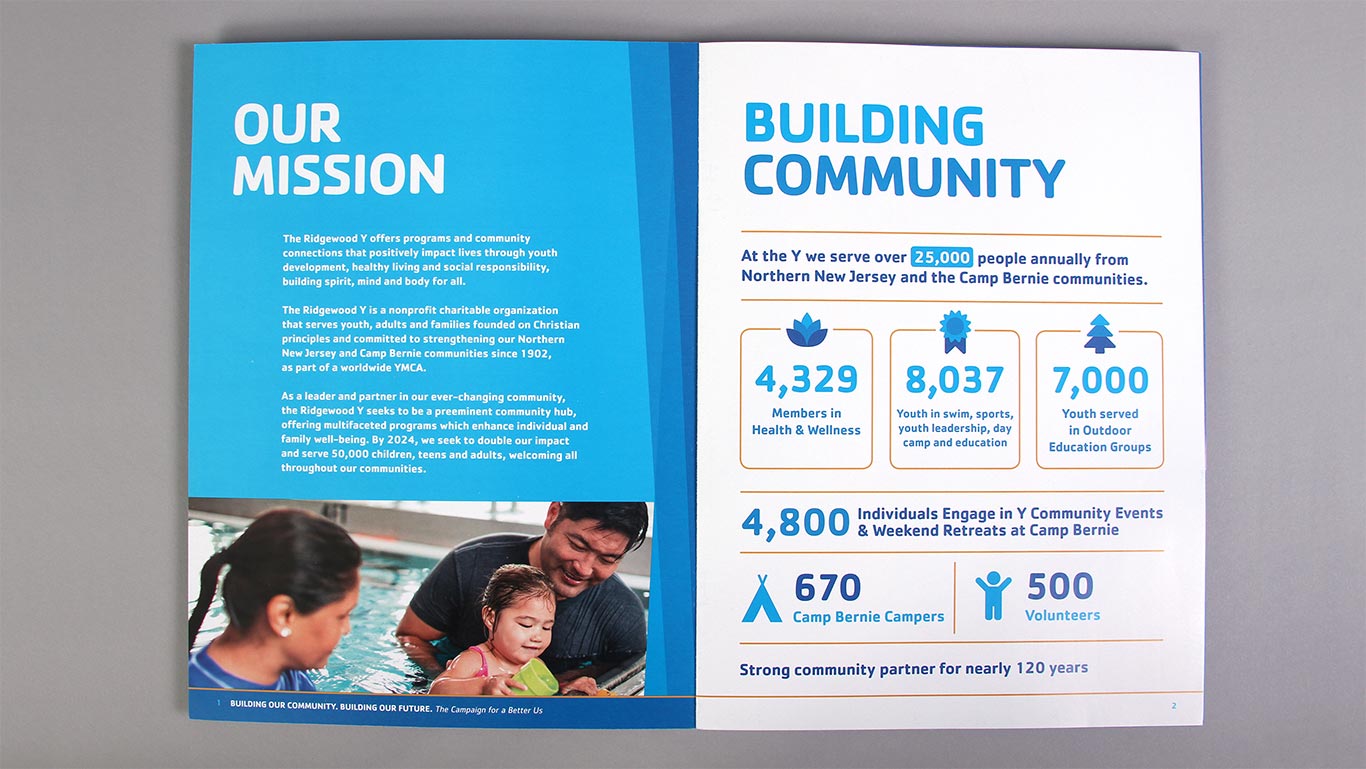
After you have your name and your case for support, you will put it all together with campaign branding. The look of this campaign should feel special. It may be directly related to your bigger brand, but it should have its own logo, colors or fonts to create a signature visual identity that clearly supports your campaign name. Once you have settled on the right design, you can use it for all aspects of that specific campaign to create recognition and awareness. At Trillion, we have created memorable looks for many campaigns that distill and promote the message with maximum effect.
4. Donor Commitment Letter
The majority of the campaign will be the quiet phase when you are courting your largest donors. Once a donor pledges a gift, the commitment letter is the document that secures their promise. It should be branded with the campaign logo and written with language that reflects the tone of the campaign. Most importantly, the commitment letter should be thankful!
5. Digital Component to Inform Donors and Report Success
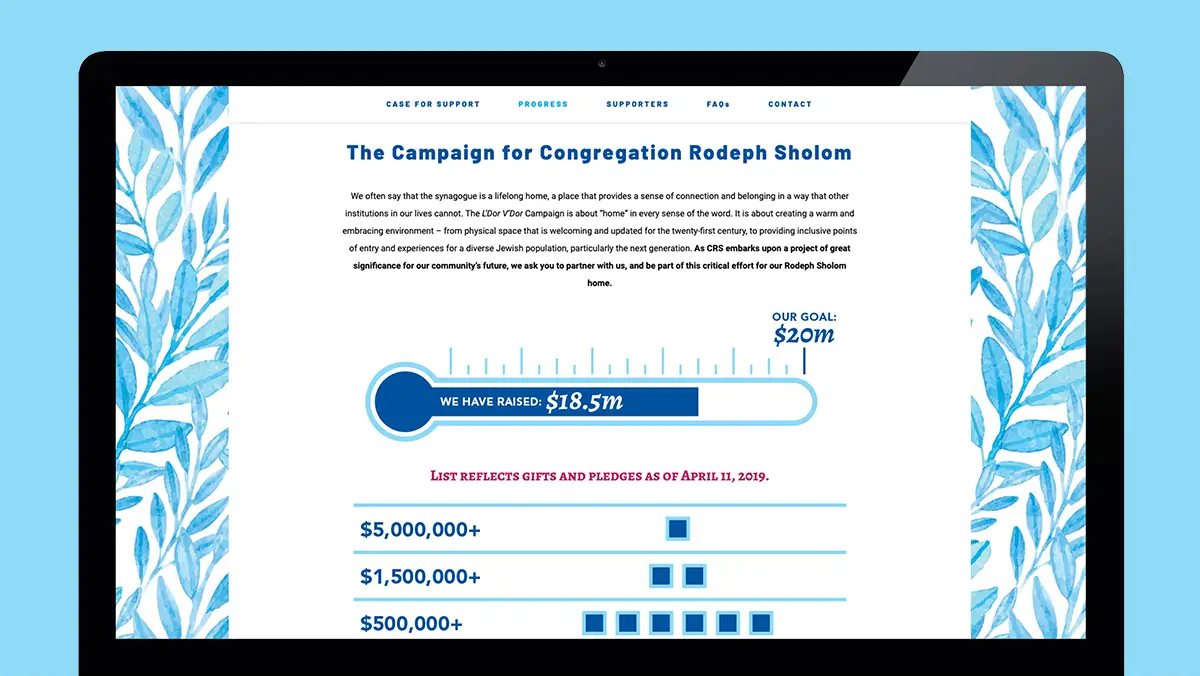
Once the quiet phase has ended and you are ready to publicly begin seeking donations, you need a place to record your success. Think of the old fundraising “thermometers” that would gradually fill up as donations increased: you need a web component that expresses the progress. You could create a page on your own website, a microsite or a unique digital experience. Think creatively about where you can point people to learn more about the campaign and create excitement. The site can house your case for support brochure, show renderings of a construction project, offer naming opportunities, and share videos of donors or beneficiaries that you would be unable to share in a printed brochure. This digital component could also feature a strong call to action to give and other useful downloads about the progress.
With those five all-important elements listed above in place, you will be well on your way to a successful campaign. The next five components can go even further to publicize your efforts and widen your circle of prospective donors as you begin your public phase.
6. Fundraising Team Presentation
A fundraising team presentation is essentially a pitch deck that can be customized to appeal to a certain donor or segment of donors. Because it is editable, it gives the team some flexibility in presenting to donors: your team can focus on a certain aspect of the campaign that the donor may be interested in. Using the same messaging and branding as the printed case for support brochure, this digital presentation can be updated to reflect the most recent data for donations or other developments and be built in PowerPoint, Google Slides, or Canva.
7. Campaign Video Explainer
This is a case for support distilled into video format. One to three minutes in length, it is an easy way to demonstrate your need and share the vision of what your end goal will produce. You can have stories about the community you’re trying to help, renderings of a planned building, or any other visual that makes a compelling case for the need for support. It is a mix of storytelling about the impact the project will have on its community and a vision of the end project. You could post the video on your website, share it on social media, or send it to your email list.
8. A “Last Push” Public Campaign
When you begin your public phase, you have (hopefully) already raised a majority of the funds. Now, with a burst of energy as you reach the finish line, you can publicize the campaign, involve the media, engage all levels of donors and complete the fundraising. All your materials, videos, etc., are now public and can be openly promoted, creating a feeling of momentum.
This is the time to add the use of direct mail, special events, social media, digital advertising, PR, and more. This broad outreach will invite everyone to feel like they are part of the campaign. Share your progress and create a celebratory feeling to commemorate the end of the fundraising and the excitement of the new endeavor.
9. Capital Campaign Swag
To continue getting your branding in front of the widest possible audience, consider investing in swag. Small branded materials help engage donors. They could be support pins, stickers, tote bags … almost anything. It is a chance to apply the campaign branding onto materials so that donors and supporters can talk about it with others. Swag is great for major donor visits, for public events, and for staff engagement. You can design swag that communicates an aspect of your campaign, for instance, dog name tags for an animal shelter.
10. Signage Spreads the Word
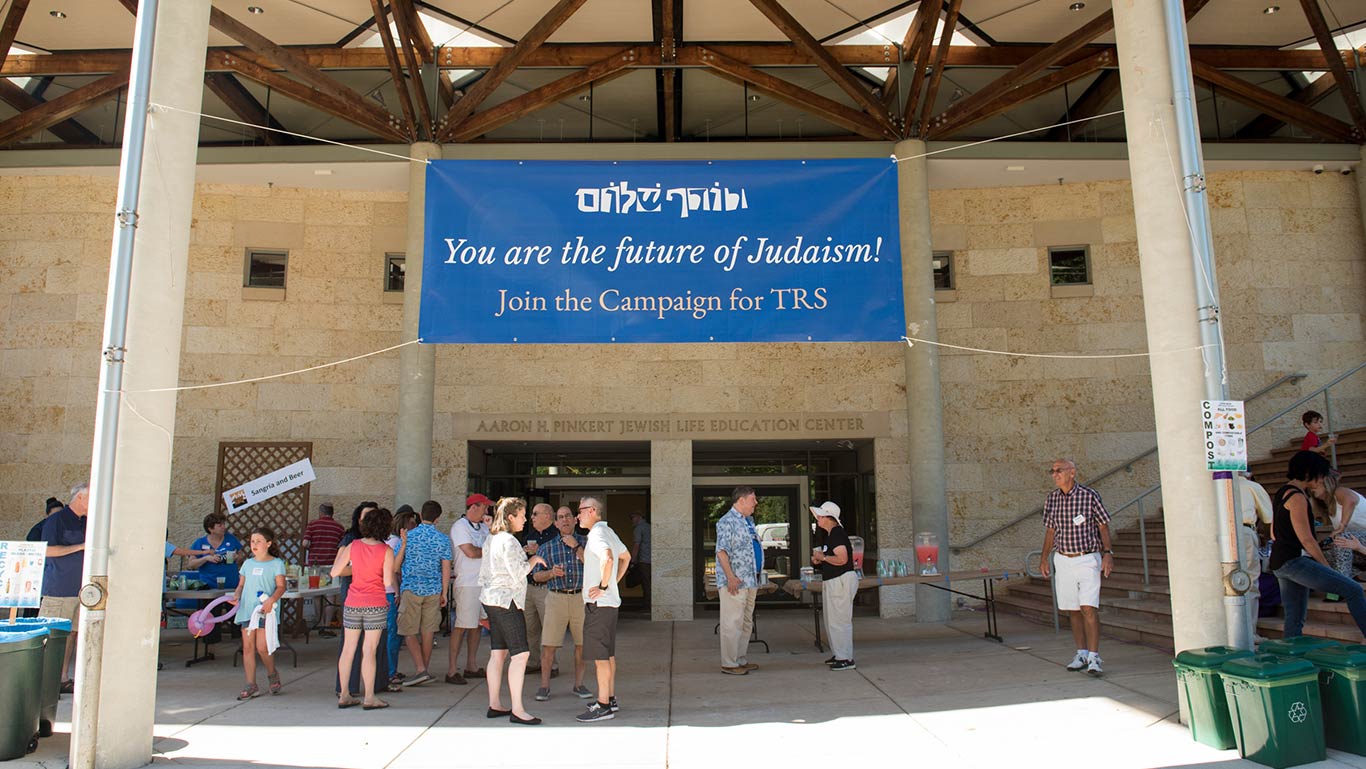
Indoor or outdoor banners, flyers, posters, window clings with your campaign name and other branding will let you share the campaign even more widely. Think of ways to point to your project and create anticipation. If you have a construction site, a banner that lets the community know “Opening this Summer!” will build more awareness and begin new conversations around your capital project.
Capital Campaigns are Full of Opportunities
The resources above will help your team be more successful by building trust in your organization and assuring donors that they are making the right choice by supporting your organization. A successful capital campaign lasts a long time, which means you need many ways to artfully reach out to donors and keep the campaign fresh throughout the months. If you are planning a capital campaign and would like help putting all the pieces together, reach out to Trillion. Our experienced creative team is ready with many ideas to help make your capital campaign a complete success.

